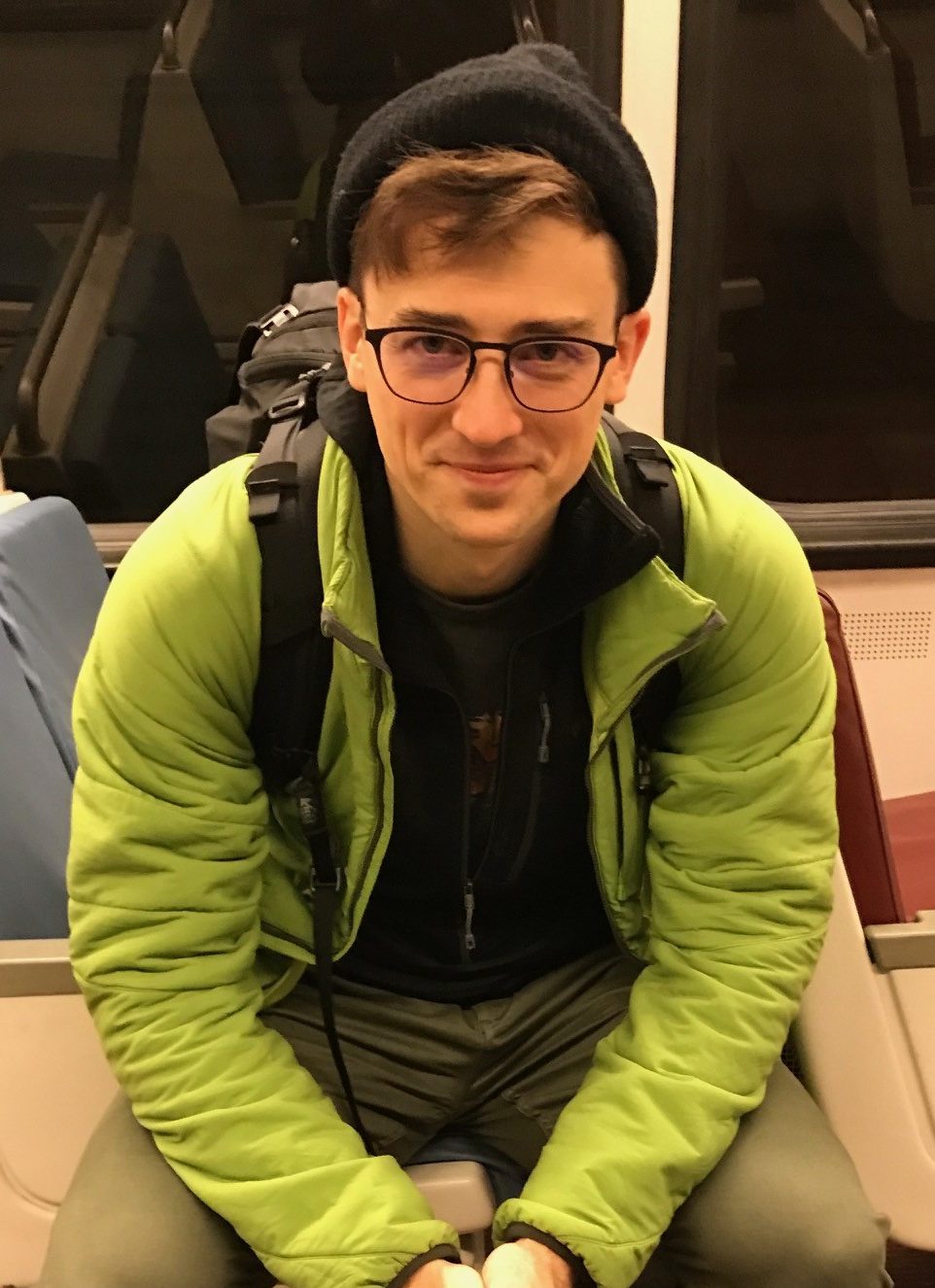Hacking Life with Diabetes
Bill runs in the woods trail breakdown
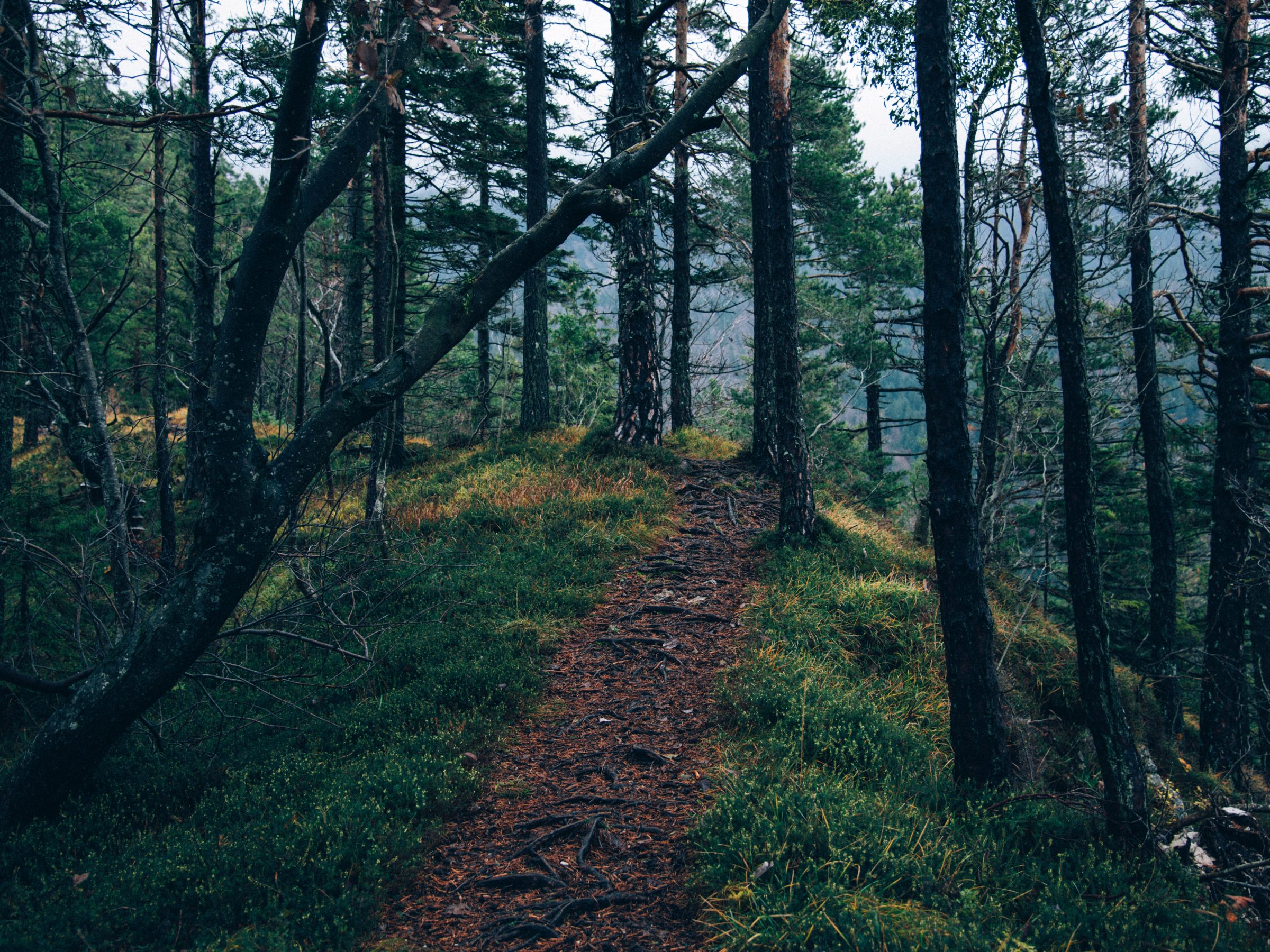
We are now in April and the project is close at hand. I’m feeling pretty good about my training.
Until now I’ve only described the path from a bird’s eye view, but I know that some of you will want to follow along on April 27th to see how I’m doing, so here is a more detailed look at the route.
The whole route has been divided into five sections. Between sections my support team will be waiting with resupplies and good spirits to keep me going.
The first two sections are the most difficult, the path on these two legs has a lot of very rocky sections that require attention and the odd scramble. These legs also have the most elevation change which is good and bad. I have generally felt like the first 22 miles beat up the feet and really slow the average pace. Despite this they are also the most exciting because the terrain is diverse.
The next two legs are a nicely worn trail with gradual long-drawn-out ascents and descents mostly. The final section is basically flat except for a 1000-foot drop via switchbacks down to the river towards the end. I think the last leg will be the toughest because mentally I deplore the flat unchanging terrain of the canal towpath. The last threeish miles are on just that and I’m concerned it will feel an eternity.
If you want to follow along day of, we’ll be posting live updates on my Hacking with Bill Facebook Page.
And of course, if you are interested in donating to help me raise awareness of Type 1 Diabetes, you can do so here. Thank you!
Details of Each Section:
I have a small breakout of each section between aid stations below, so you can be more acquainted with the route.
Section 1. Start to Pen Mar PA
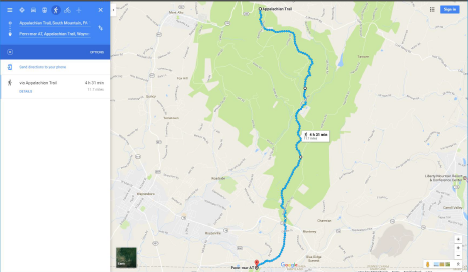
Section 1 -Stats
Approximate Distance = 12.5 miles
Approximate Elevation Gain = 2,402 ft.
Approximate Elevation loss 2,044 ft.
Section 2. Pen Mar to Ensign Cowell/Wolfsville Road

Section 2 -Stats
Approximate Distance = 9.9 miles
Approximate Elevation Gain = 1,591 ft.
Approximate Elevation loss = 1,775 ft.
Section 3. Ensign Cowell/Wolfsville Rd. to Fort Necessity
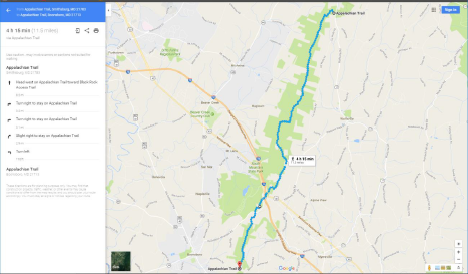
Section 3 -Stats
Approximate Distance = 11.6 miles
Approximate Elevation Gain = 1,460 ft.
Approximate Elevation loss = 1,427 ft.
Section 4. Fort Necessity to Arnoldtowne Rd.
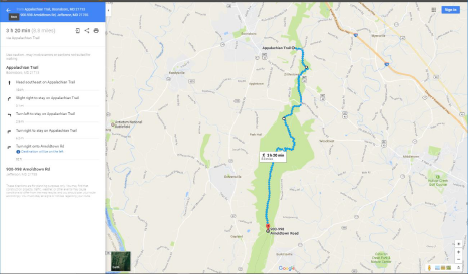
Section 4 -Stats
Approximate Distance = 8.9 miles
Approximate Elevation Gain = 1,253 ft.
Approximate Elevation loss = 1,775 ft.
Section 5. Arnoldstowne Rd. to Harpers Ferry

Section 5 -Stats
Approximate Distance = 9.6 miles
Approximate Elevation Gain = 676 ft.
Approximate Elevation loss = 1,342 ft.
Totals
Approximate Distance = 52.5 miles
Approximate Elevation Gain = 7,382 ft.
Approximate Elevation Loss = 8,363 ft.
“Project Bill Runs in the Woods” – A History
You can do anything you want, even with T1D. I want to help others realize that, and maybe save them years of less than stellar living too. I used to feel like certain interests and activities were too burdensome for me because I had to lug around supplies and fight lows or highs on the rollercoaster of blood sugar mania. I felt like either I couldn’t do them well or I would be a burden to those around me. I didn’t want to be a part of a team that I was holding back, as a result I never really reached out to others with T1D to see if a better life was possible and I hid my T1D struggles from those around me.
My current project is a great example of this struggle. For years I have been thinking about, training for, and attempting to cover a long stretch of the Appalachian Trail in one day. I have tried several times and failed (details of this story below). I have never sought help, but I need help. I want to share the struggles I’ve had and help bring awareness to the great resources available to us with the T1D.
This year when I attempt to complete my run of 53 consecutive miles of the Appalachian Trail in one day, I want to raise awareness to support an incredible resource to the T1D community- BeyondTypeOne.org and TypeOneRun.org.
Rather than focusing on research, these organizations provide a really important support network and resources that can dramatically improve the lives of anyone who has diabetes or knows someone that does. Before finding these resources I felt lost in the world trying to cope with diabetes. Please help these resources find others you know that have a relationship with diabetes. Simply sharing the URL with someone may drastically improve their life. Thank you.
Finally, here is the background story of how Project Bill Runs in the Woods has become what it is.
Growing up I got really into ultra-lightweight backpacking. Think super minimalism hiking. I would go on a week-long trek with no more than 10 or 12 pounds of gear, plus food and water, which I also cut significantly, because at the time I had no reason to worry about it, I wasn’t diagnosed yet. It was great fun and I had all kinds of aspirations to thru-hike the Appalachian Trail (AT) and the Pacific Crest Trail, maybe hike the Silk Road one day, etc.
But at 13 I was diagnosed with type one diabetes and I had to start carrying around a bunch of crap 24/7 to not die, at least that’s the message I got. I went from super inspired in life to not so much. I held onto those dreams of ultra-lightweight hiking for a bit, but the literal weight of crap I was carrying around in my daily life now wore me down. Not to mention the constant fatigue from the ups and downs of my sugar levels, the 24/7 anxiety of how to correct, predict, or prevent what would happen next, and the enormous pressure as a teen to now have to make constant calculations with undefined variables like how will this activity affect my sugar? How many carbs are in that unlabeled food? Do I have enough insulin or snacks to cover this, that, or the other thing? It was overwhelming and spirit breaking.
I kept active and pushed through it. I was a decent athlete, in my freshman year of high school I ran a mile in 4:48 and a 5k in 17:35. I thought “man, I’m going to be awesome someday.” Despite that I watched myself wither away physically and mentally under the strain of daily decision fatigue and physically being unable to recover for the next workout. I never got any better, just worse.
If I had asked for help and adjusted my training and diet it could have been different. Resources and support like those provided by TypeOneRun.org and BeyondType1.org would have been amazing and that’s why I want to promote them now.
I continued on in denial that this was my life now, I finished high school, and had a fairly good mental outlook. I had heard about this cool thing thru hikers do on the AT called the “Maryland Challenge.” The Challenge is to hike the entire state of Maryland in one day from Harpers Ferry, WV to Penn Mar, PA, a total of 42 miles. Usually people have been on the trail for a month or two at this point and despite their great shape, it’s still a challenge, thus the name.
Attempt 1.
I decided I wanted to do the Maryland Challenge as part of a week on the trail with my friend Jamie. We had both done several 5+ day backpacking trips before and felt in good shape, so we blocked off a week and planned to have the Maryland Challenge on day four of the trek.
There were numerous factors at play, but the result was this: I didn’t properly account for having diabetes and I was simply too unprepared for this trek. After some years of deterioration from T1D and having continued to train like I didn’t have diabetes, I only lasted 3 days on the trail.
My sugars were all over the place, mostly low. I was super dehydrated, my feet were bleeding, I was delirious. We hadn’t even come to the Challenge yet. I felt pathetic and in denial that I should be compensating for having diabetes. I was embarrassed about holding back Jamie. I was appalled at myself for being weak. After much deliberation and many excuses, we stopped in Harpers Ferry at the start of the Challenge and went home. That was my first attempt.
Attempt 2.
Years went by, I continued to insist I didn’t need to treat myself differently, which lead to a disappointing tenure in college athletics where I still didn’t seek help. During this time my outlook went from bad to worse. I had become the bitter old man on his front porch angrily reminiscing the old days, when I was in my early teens, as the height of my well-being.
Around rolls summer 2015 and I am desperately seeking an out from the “system” I have been following for my health. I haven’t been inspired or felt good in years. Somewhere online I read a quote, something along the lines of “if you want to see change you need to take drastic and extreme actions.” From this I created a list of things I had been putting off or I wanted to do, but that seemed impossible.
I don’t remember now, but maybe the first thing on that list was the Maryland Challenge. I said to myself “ok, let’s get inspired again, go do this thing and maybe you can find meaning in life again. In fact, do more! You know you can do the Maryland Challenge, If you are going to do 42 miles, why not just bump it up to a 50 mile ultra-run? Or better, a double marathon?! Ok! Yeah! I’m going to do this.”
That is how the current form of the project was born.
From there, I started training for an ultra-run of 53 miles that I mapped out on the AT north to south from PA to WV. I planned to do this in September 2015. Well, in August I tore my meniscus at a rock climbing competition, so I waited to heal and we come to May 2016.
I’ve been training pretty traditionally with lots of mileage and totally killing it. I also have an insulin pump now, so by default I’m in a little better control of the diabetes, but still not really making it a consideration in my training regimen. The big day comes and I start the run. It’s wet from a light rain the night before and I slip on a rock, re-tearing my meniscus. Then a big storm rolls in and I can barely walk at this point, so I had to call it quits at mile 22. That’s Attempt 2.
Attempt 3.
I was a bit demoralized by the last attempt, but I’ve had surgery to fix my knee and trained through 2017. At this point I’ve finally realized that I need to be making special modifications to my training and lifestyle to optimize my health in consideration of the diabetes.
I’ve altered my training regimen and diet significantly. I’ve been researching ultra-runners and their habits. I’m super informed on how to run an ultra like a normal person. But this time I’m accounting for the T1D as well. I have developed the “perfect” combination of powders, gels, candies, and liquids to consume so I don’t get low. I get some great people to work as my support team and resupply me along the way. I’m super pumped to do this run and finally be free of this tab that has been open on my mental browser for a long time.
May 2018, I make attempt 3 and all goes well, but after 44 miles my body shuts down. Again, there were a number of factors, like still getting low blood sugars and then high ones because of stress and lack of sleep. These are things you just can’t really account for, but the primary factor was heat exhaustion. At the last resupply I start convulsing and have no control over myself. My temperature was elevated and I’d given my system way too much to deal with by trying to process that “perfect” combination of things to eat. It had also taken me far too long on the 4th section so it was now dark out. My support team and I made a smart decision to stop. That was Attempt 3.
Enter Attempt 3.1 April of 2019.
I’ve made some additional adjustments to my training schedule and dietary requirements, but the big difference is this year I’m not trying to do it alone. I’m asking for your help. I’ve added a little pressure maybe, but I want to make sure that at least something good will come of this, regardless of my result.
In 2019 I want to bring awareness of the existence of the T1D community and to the T1D community that we may have some extra baggage, but we can do these kinds of things. It took me a long time to find support resources like Typeonerun.org and BeyondType1.org and I hope that by helping support them and my community of T1Ds other people can find these resources and support sooner and accomplish their goals, whatever they may be, so they can live an inspired life despite T1D.
